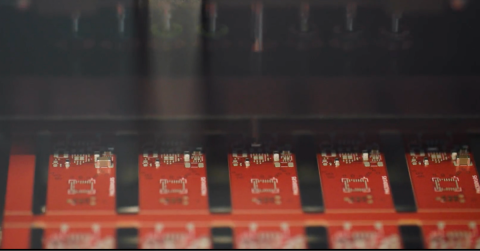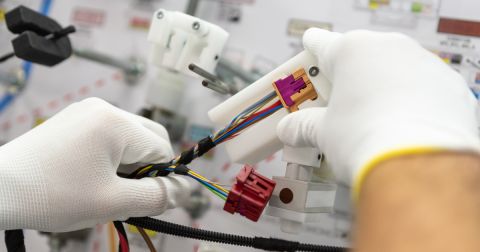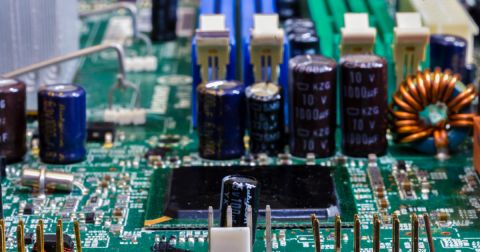Problems in Multiboard BOM Generation? Unified Design Tools Can Help

Your next multiboard system design is likely complicated enough. You’ve got to worry about multiple layouts, multiple schematics, signal integrity within and between boards, mechanical form and function, and EMI/EMC. With all these design aspects to worry about, documenting every aspect of your board can be a time suck.
With so many new products being built from multiboard systems, you shouldn’t have to choose between multiboard system designer tools and thorough documentation tools. When you’re preparing for manufacturing, you’ll need to generate a BOM for each board in your PCB, but most platforms force you to create a new instance for each board, turning documentation into a monotonous, manual task. Here are some problems that can arise when working with separate tools for design and documentation for multiboard designs.
Multiboard Systems Design Challenge: Separate Boards, Separate Instances
Low-quality PCB design software will force you to work in separate instances when creating multiboard system designs. If you have access to bill of materials generation features, they won’t check for duplicate reference designators in multiple designs, forcing you to adopt a manual ad hoc system for keeping track of this important information. As projects become more complex, the risk of design and assembly errors increases.
On the design side, this creates difficulty in analyzing the mechanical behavior of a complex system. Some design tools allow you to examine a single board individually, which is helpful if one of your boards is a flex or rigid-flex board. However, unless you have access to an external 3D modeling application, some of the mechanical behavior becomes guesswork.
Examining signal integrity is also difficult in design tools that are not adapted for multiboard design. Routing high speed or high frequency signals over connectors can create EMI susceptibility if not done correctly. When boards have to be analyzed in separate instances, you lose the ability to analyze crosstalk and reflections with a post-layout simulation tool. At some point, this effectively requires rebuilding the combined board in a single instance, which becomes time-consuming.

Integrated layout tools built for multiboard system designers solve these problems in that your standard schematic, layout, simulation, and MCAD features are present in a single application alongside powerful multiboard design tools. When we look at documentation, we see another aspect of multiboard design where most design applications fall short: bill of materials generation.
Bills of Materials for Multiboard System Designs
Just like components on different boards might mistakenly be designed the same reference designator, multiple boards may have common components. Manually merging separate BOMs to place an order with a supplier is a tedious manual task, which is also prone to errors. A manual BOM merge process often involves importing each BOM into a spreadsheet and writing a script to join them into a complete BOM. Designers are talented individuals, but not all designers have the programming experience required to do this quickly. If you have a multiboard system design with a large number of components, this becomes tedious if done by hand.
This is where you need to have access to an integrated toolset that includes powerful multiboard BOM management tools. This streamlines BOM generation by automatically joining components from multiple boards into a single location. This eases later ordering and assembly processes and helps prevent errors while compiling documentation for your manufacturer.

How Unified Design Tools Can Solve Multiboard System Design Challenges with BOM Generation
The best set of design tools for creating multiboard designs and creating the required documentation are integrated into a single design interface. As part of multiboard design, your design tools should give you the following capabilities:
-
Hierarchical schematic editing tools. Multiboard system designs can get complicated quickly, and you’ll need tools that help you stay organized. Hierarchical schematic tools allow you to define important parent-child relationships between different portions of your system and let you focus on functionality.
-
2D and 3D ECAD tools. Your CAD layout tools should be ultra-accurate and operate in 2D or 3D.
-
MCAD tools for multiboard systems challenges. Multiboard designs can be complex and include multiple moving parts. These systems often need to work within specific packaging constraints. MCAD tools directly in your PCB design software allow you to simulate the mechanical functions of your system and examine your layout in 3D.
-
Supply chain visibility. No one wants to send their board out for production and assembly only to find that lead times for critical components span multiple months. Access to supply chain information throughout the design process helps a design team remain agile and anticipate supply chain problems rather than react to them.
-
Documentation generation tools. This is where it all comes together as you plan for manufacturing. Your multiboard BOM needs to consider components throughout a multiboard system, rather than looking at each board individually.
Once you’ve created your multiboard system design in a unified environment, you can access supply chain information and build a bill of materials for all your boards at once. This is the type of environment you’ll find in Altium. The ActiveBOM tool allows you to compile bills of material for your entire system at once rather than working with each board in a separate instance. You’ll also have access to schematic design, schematic capture, layout, and signal integrity tools in a single application.











